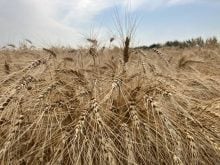JAKARTA, (Reuters) – Indonesia’s imports of wheat for flour are expected to reach 8.5 million tonnes this year, an industry body said, up from 8 million tonnes in 2017, despite increasing prices of the grain.
Indonesian demand for noodles, biscuits and snacks like martabak, a local version of a pancake, has climbed steadily in recent years as a growing middle class adopts a more western diet.
Read Also

U.S. grains: Soybean futures hit one-month high on U.S.-China trade hopes
Chicago Board of Trade soybean futures hit their highest level in a month on Monday on renewed optimism over U.S.-China trade talks after U.S. President Donald Trump said he believed Beijing would agree to a soybean trade deal and will buy U.S. soy again.
The country is the world’s second-biggest wheat importer, behind Egypt, according to United States Department of Agriculture (USDA) data.
But a 9 percent drop in the value of the rupiah against the U.S. dollar this year has increased costs for importers and may slow consumption going forward, Indonesian Flour Mills Association chairman Franky Welirang said.
“Purchasing power could decline,” said Welirang, referring to the weakening rupiah and a forecast 10 percent climb in wheat flour prices in the second half of 2018.
Wheat prices have also been pushed up after poor harvests in Australia, the world’s fourth biggest wheat exporter and a key supplier to Indonesia, and a fall in Russian wheat output tightened global supply.
“We’ve looked for wheat in other places – Russia, Ukraine,” Welirang said. “Wheat is expensive.”
Over the past 10 years, Indonesia’s wheat imports have grown 5 percent a year on average, and wheat imports in the first half of 2018 reflected a continuation of this trend, Welirang said.
Indonesia bought a total of 10.5 million tonnes of wheat in 2017/18, compared with Egypt’s 12.4 million tonnes, the USDA data shows














